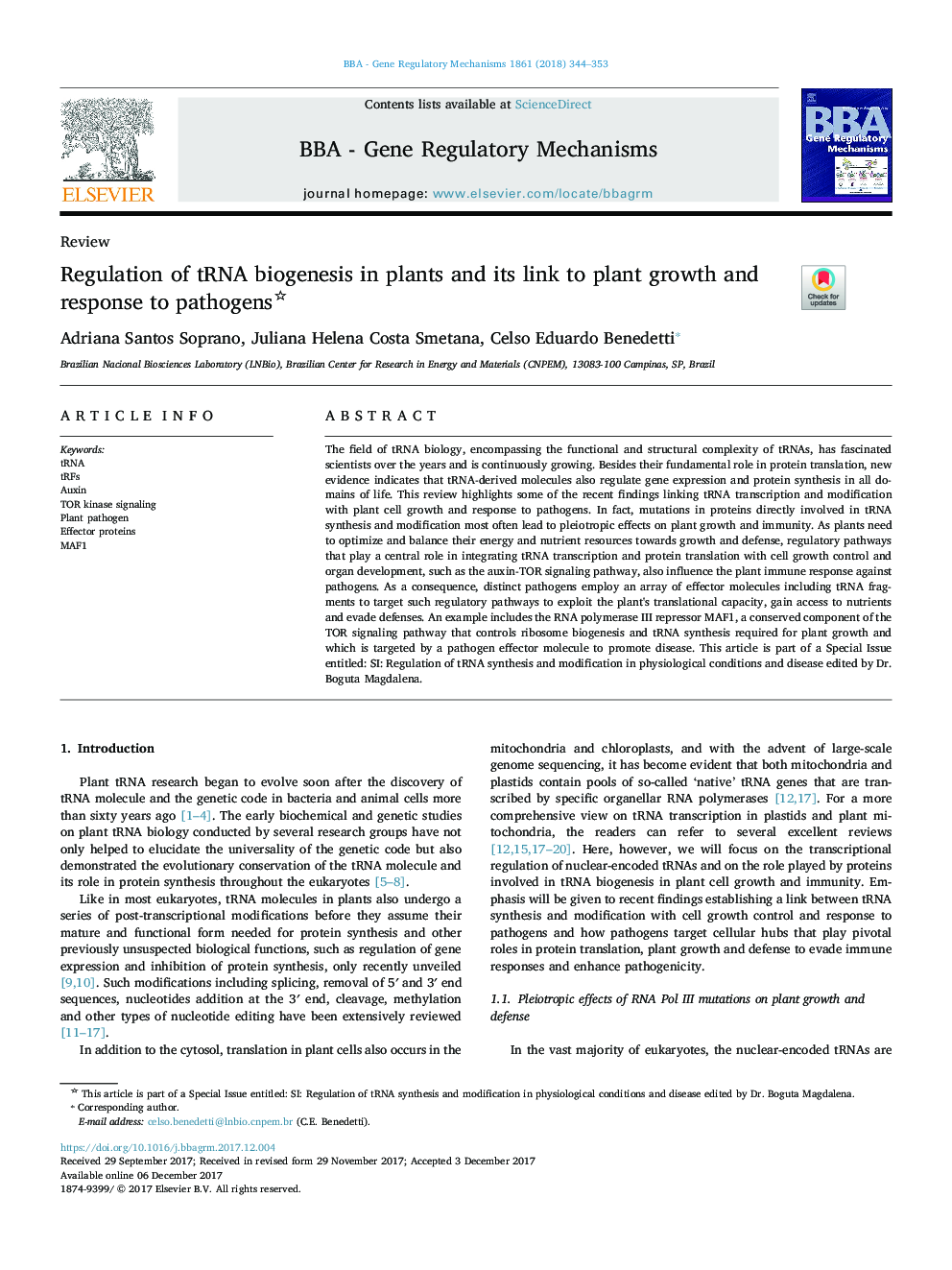| Article ID | Journal | Published Year | Pages | File Type |
|---|---|---|---|---|
| 8300341 | Biochimica et Biophysica Acta (BBA) - Gene Regulatory Mechanisms | 2018 | 10 Pages |
Abstract
The field of tRNA biology, encompassing the functional and structural complexity of tRNAs, has fascinated scientists over the years and is continuously growing. Besides their fundamental role in protein translation, new evidence indicates that tRNA-derived molecules also regulate gene expression and protein synthesis in all domains of life. This review highlights some of the recent findings linking tRNA transcription and modification with plant cell growth and response to pathogens. In fact, mutations in proteins directly involved in tRNA synthesis and modification most often lead to pleiotropic effects on plant growth and immunity. As plants need to optimize and balance their energy and nutrient resources towards growth and defense, regulatory pathways that play a central role in integrating tRNA transcription and protein translation with cell growth control and organ development, such as the auxin-TOR signaling pathway, also influence the plant immune response against pathogens. As a consequence, distinct pathogens employ an array of effector molecules including tRNA fragments to target such regulatory pathways to exploit the plant's translational capacity, gain access to nutrients and evade defenses. An example includes the RNA polymerase III repressor MAF1, a conserved component of the TOR signaling pathway that controls ribosome biogenesis and tRNA synthesis required for plant growth and which is targeted by a pathogen effector molecule to promote disease. This article is part of a Special Issue entitled: SI: Regulation of tRNA synthesis and modification in physiological conditions and disease edited by Dr. Boguta Magdalena.
Related Topics
Life Sciences
Biochemistry, Genetics and Molecular Biology
Biochemistry
Authors
Adriana Santos Soprano, Juliana Helena Costa Smetana, Celso Eduardo Benedetti,
